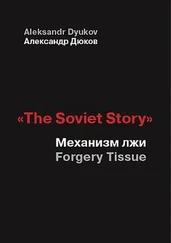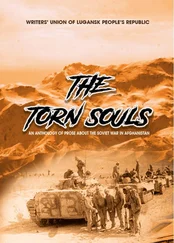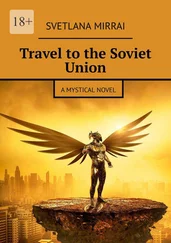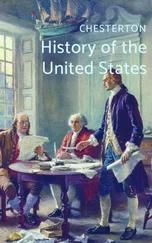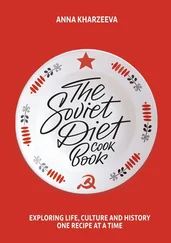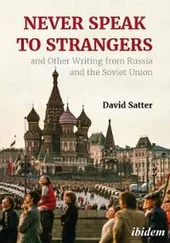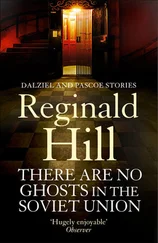Of course it had never been the Bolsheviks’ intention to let Russian agriculture stagnate in small and primitively cultivated holdings. They had always envisaged large farms, collectively owned and mechanized. Their 1917 Land Decree had been a tactical diversion from this strategy, and they intended now to return to the main highway. In the last years of his life Lenin on the whole thought that this ‘collectivization’ of agriculture should take place gradually, with the party encouraging the creation of model collectives whose high productivity and prosperity would in time persuade the rest of the peasantry to join them.
A certain number of collective farms did already exist, some of which had started during the civil war, with party encouragement and help. Broadly speaking, these were of three types: (i) the kommuna , in which all property was held in common, sometimes with communal living quarters and childrearing; (ii) the artel in which each household owned its own dwelling and small plot of land, together with such tools as were needed to cultivate it, but all other land and resources were shared; (iii) the TOZ, or ‘association for common cultivation’, in which some or all of the fields were cultivated collectively. The last category might be barely distinguishable from the traditional village community, with its custom of pomochi , or mutual aid at busy times of year. It is no surprise, then, to find that the majority of collectives were of the TOZ variety, and there is evidence to show that some of them at least were ordinary village communes relabelled to draw the tax advantages of ‘collective’ status.
In addition, there were some state farms ( sovkhozy ), in which the labourers were paid a regular wage, like industrial workers. Even taken together, however, all state and collective farms accounted in 1927 for less than 2 per cent of cultivated land. It is significant, though, that their share of marketed produce was much higher: about 7.5 per cent in 1927. In view of this, one might have expected that the party would have begun a programme of ‘collectivization’ much earlier. In fact, however, the party was remarkably dilatory during most of the 1920s about pursuing its own official policy.
In part this was because of the weakness of the village soviets. In theory the soviets were supposed to take over local administration, leaving the peasant mir (renamed ‘land society’) to cope with questions of land tenure and cultivation. In practice, however, the mir continued to collect local taxes and to perform administrative functions, as before the revolution. A study published by Izvestiya in 1927 showed that the mir, not the soviet, was still the basic unit of local government in most villages, and that this was creating problems in the relations with the next tier above, the volost soviet.
Nor was the party any more successful than the soviets in rooting itself in the countryside. The Communists were townspeople by mentality and inclination, and most of them regarded village life with indifference or distaste. It is true that the revolution and civil war did bring an influx of rural members into the party, mostly Red Army soldiers. Yet these were often the first to be expelled in purges against the corrupt or insufficiently active, and in any case they constituted a negligible proportion of the rural population. The 1922 party census reported that party members formed a mere 0.13 per cent of the villages’ inhabitants, and many of these were teachers, doctors, agronomists and officials of volost soviets. By 1928 this proportion had only doubled: out of an estimated rural population of 120 million, about 300,000 (0.25 per cent) were Communists, and of that number only some 170,000 were actual peasants.
By and large, the weakness of the party meant domination of the village by the traditional notables. While all adults, including women, enjoyed a vote for the soviet, the commune was, by custom, a gathering of the heads of household, almost invariably male. Younger men, women and the landless were usually excluded. This meant that, in spite of the equalizing tendencies of the revolution, a degree of stratification soon reappeared in the villages. Indeed, it had never entirely disappeared. Since the commune had usually controlled the process of redistribution in 1917–18, the village notables had typically tried to ensure that some elements of greater wealth–whether in the form of acreage, livestock, or tools–remained in their own hands, or with the families whom they trusted. The former landless were better off than before, but they never became the equals of their ‘betters’.
This stratification is greatly emphasized in the Soviet studies of the subject, both contemporary and subsequent. They divide peasants into so-called ‘kulaks’ (‘fists’ or moneylenders, by nineteenth-century usage, but a term now loosely applied to better-off peasants), middle peasants, poor peasants and landless labourers. The definitions of these terms fluctuated, and they were used by the party on the whole for political rather than scientific purposes. Their use was intended to suggest that class war was brewing in the countryside between the richer and poorer strata. However, Teodor Shanin’s examination of the Soviet data tends to invalidate this hypothesis. He shows that the incomes of kulak households were only marginally higher than those of the ‘middle peasants’: they might own two horses, hire labour at busy times of year and have more produce left over for the market, but they were in no sense a separate, capitalist stratum. As for the ‘poor peasants’, while clearly a real category, their poverty was typically due to circumstances that were temporary–illness, natural disaster, military service of the breadwinner, shortage of working hands. ‘The chance of a hard core of poor peasants showing lasting cohesion and ability for political action emerging was very limited, therefore.’ Nevertheless, this was the layer which the party was to try once more to organize, from 1927, in the form of ‘committees of poor peasants’.
Nor is there much evidence of systematic conflict between different classes of rural dwellers. What Soviet sources call ‘kulak outrages’ usually turn out, when one can look more closely at the sources, to have involved more than just the wealthier peasants, and often the whole village. It would be much closer to the truth, in fact, to say that the great dividing line was not that between classes of the peasantry, but that between peasants and the rest of society, in particular anything that smelt of the towns. Gorky, writing of his conversations with peasants in 1922, reports that they felt ‘suspicious and distrustful … not of the clergy, not of authority, but simply of the town as a complex organization of cunning people who live on the labour and grain of the countryside and make many things useless to the peasant whom they strive in every way to deceive, and skilfully do so.’ There was much in recent peasant experience to substantiate this view. Since 1914 the town had called up the peasant’s sons to fight in a war for aims quite irrelevant to the village, it had requisitioned his horse for the cavalry, it had taxed him extra and offered him derisory sums for his grain; then, after a paltry land allotment in 1917, it had called up his sons yet again and also extorted his produce by force, paying him nothing for it. Quite often, furthermore, the town had closed down his church, sometimes destroying it in the process, and arrested his village priest.
The peasants’ distrust, in fact, was wholly understandable, indeed rational. And although they found the products of the town useful, most peasants were still at a sufficiently primitive economic level to be able to fall back on their own resources if they had to. It was very convenient to buy candles, kerosene, matches, nails and vodka in the town, but if really up against it, a peasant could devise his own substitutes for most of these things, and cottage industry was still lively enough to satisfy many of the needs which in more ‘advanced’ societies are supplied from the town. If they found market conditions not to their liking, in other words, peasants could react, not by working harder and trying to make more money, but by withdrawing from the market altogether. That had been demonstrated in 1918–21, and the threat of a repeat performance always hung over Bolshevik calculations.
Читать дальше


